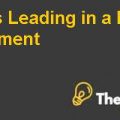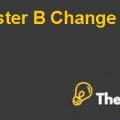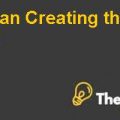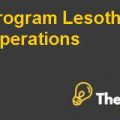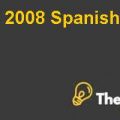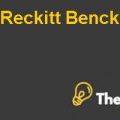
Introduction
Applied Energy Services (AES) was founded in the year 1981 by Dennis Bakke and Roger Spat. The main business of the company is to supply consulting services to the energy industry. The first plant for the company was installed in 1986 at Houston. The company AES went public in 1991. The company is set to have almost 25,000 employees by the end of 1996 with the purchase of power plant in Kazakhstan. The company operates in the United States, Ireland, England, China, and Argentina and has a plant in Pakistan also.
The organizational structure of the company is quite unique and different as compared other rivals around the world. AES has a decentralized organizational structure, where the decision making is done by the individuals regarding all matters and affairs. This has been the unique attribute of the company where each employee has the authority to participate in strategic decision. AES does not have a human resource department, legal department, environmental department, etc which is considered a necessity for such a large scale company. However, without these departments, AES has been performing quite efficiently.
Problem Diagnosis
The problem identified in the case “Human Resource at the AES Corporation: The case of a missing department” indicates that since, AES has been expanding globally, the business model of being a decentralized organization can be a great deal of risk for the company. Along with this, the CEO Bakke realized that AES was quite different, but moving forward how will the company be able to manage geographical expansion and other constraints by being a decentralized organization.
Bakke is convinced that the current business model is the core identity of AES. However, Bakke is thinking how the company should operate with the continuous growth and increased competition in the future. With the industry rapidly growing, it is necessary for Bakke to have a strong organizational culture which can lead to successful transition of AES.
Analysis
HRM Strategy: Warwick Model
To analyze the current situation of the company and to look upon the future strategic decision making Warwick Model has been used. The model basically helps in identifying the business context, the inner context, human resource context and human resource content. The model over here is used to analyze the situation where the company AES currently stands. As for now, the business context of the company is to provide consultancy services to the energy sector. To achieve the objective of the company, AES operates in local and intentional market where it forms partnerships, mergers & acquisition, etc. depending upon the market and the company.
The inner context of the company AES is a rather decentralized organizational structure. The company does not have separate departments for the business; in fact decision making is generally done by individuals who are not specialist in the field. This is how the inner context or the business model of AES operates and works. The human resource context is quite effective at AES currently. The reason is simple; employees who perform extraordinary are given just rewards and compensation. Along with this, the turnover rate within the company is also next to minimum which indicates the overall atmosphere at AES. In fact, employees are given stock options at all levels to motivate employees.
Finally, it can be said that currently the human resource context of AES is quite effective with the decentralized structure. However, moving forward, it might not work in favor move the company, therefore, a change is necessary within the human resource context. The company needs to become a more centralized company with the rapid expansion it has been a part of. To maintain its pace and to stay ahead of the competitors, it is necessary to alter within the human resource context of the company.
Conclusion
The conclusion with the use of Warwick Model is to suggest AES to introduce a rather centralized organizational structure within the company. By having standard and specialized departments for each function of the company, it is highly expected that the overall performance of the company will rise and the internal problems of the company discussed in the case will resolve rather sufficiently.................................
This is just a sample partial case solution. Please place the order on the website to order your own originally done case solution.
AES develops and operates power plants around the world, and by the end of 1996, has about 20,000 employees. But, the corporation does not have the human resources personnel, or the corporate headquarters in Arlington, Virginia, or any of its manufacturing facilities. In addition, the company has very little centralized staff at all - there is little or no strategic planning or environmental protection department, and almost no legal staff. Question: Can and should the company continues to work the same way, with a small specialized staff, as it continues to expand and geographic diversification? Another question: as if the organization was able to be so successful without developing and building on the specialized expertise of "Hide
by Jeffrey Pfeffer Source: Stanford Graduate School of Business 27 pages. Publication Date: February 1, 1997. Prod. #: HR3-PDF-ENG


